Introduction to Smart Grid Technology
Smart grid technology represents a transformative approach to electricity delivery from producers to consumers using digital communication technology to enhance reliability, efficiency, and sustainability. Unlike traditional grids, smart grids are dynamic and can respond in real time to the changing demands of both users and energy producers. At their core, smart grids leverage advanced metering infrastructure (AMI), grid automation, demand response technologies, and integrated renewable energy sources to optimize energy use and reduce greenhouse gas emissions.
Manufacturing process of Smart Grids
Key Components of a Smart Grid
- Smart Meters
- Materials Used: Plastic housing, silicon and copper for the electronic components, and sometimes glass for the meter display.
- Manufacturing Process: Smart meters are manufactured through standard electronic manufacturing processes, including circuit board assembly, soldering of components, and assembly of the housing.
- Communication Networks
- Materials Used: Copper and fiber optics for wired communication; silicon for wireless transceivers and antennas.
- Manufacturing Process: The manufacturing processes for communication equipment involve precision engineering for the production of microelectronics, fiber optics drawing for cables, and assembly of various communication devices.
- Sensors and Control Devices (e.g., PMUs, FPIs)
- Materials Used: Silicon for microchips, various metals for sensor components (e.g., copper, platinum), and plastics or ceramics for housing.
- Manufacturing Process: Sensors are produced using semiconductor manufacturing techniques, including photolithography for chip production, and precision machining for the physical components.
- Energy Storage Systems (e.g., batteries, flywheels)
- Materials Used: Lithium, cobalt, and nickel for lithium-ion batteries; steel and other metals for flywheels.
- Manufacturing Process: Battery manufacturing involves electrode preparation, cell assembly, and electrolyte filling. Flywheels are produced through machining of metal components and assembly of the energy storage system.
- Renewable Energy Sources Integration (e.g., solar panels, wind turbines)
- Materials Used: Silicon for photovoltaic cells, steel and fiberglass for wind turbine blades, and rare earth metals for wind turbine motors.
- Manufacturing Process: Solar panels are produced via silicon wafer manufacturing, cell fabrication, and panel assembly. Wind turbines involve precision engineering for the turbine components and large scale assembly processes.
- Grid Automation Equipment (e.g., automated switches, DA devices)
- Materials Used: Metals such as copper and aluminum for conductive components, silicon for electronic controls, and plastics or composites for housing.
- Manufacturing Process: These components are produced through a combination of electronic assembly for the control units and mechanical engineering for the physical switching mechanisms.
Integration Process
The integration of these components into a smart grid involves several steps:
- Infrastructure Upgrade: Replacing traditional meters with smart meters and installing necessary communication infrastructure.
- Sensor and Automation Deployment: Placing sensors throughout the grid for real time monitoring and control, and installing automated switches and other devices for improved response capabilities.
- Energy Storage and Renewable Integration: Setting up energy storage facilities and connecting renewable energy sources with the grid, ensuring proper synchronization and management.
- Software and Analytics: Implementing advanced software systems for data analysis, grid management, and customer interface, allowing for optimized operation and energy use.
Challenges and Considerations
- Material Availability: The manufacturing of smart grid components, particularly those requiring rare earth metals or specific polymers, can be impacted by material scarcity and supply chain issues.
- Environmental Impact: The production processes for some components, such as batteries, involve environmental considerations, including energy use and waste management.
- System Integration: Ensuring compatibility and efficient communication between different components and systems within the smart grid poses significant engineering challenges.
Differentiating Smart Grid from Traditional Grids
1. Phasor Measurement Units (PMUs)
- Specifications: PMUs provide real time measurements of electrical waves on an electricity grid, using a time synchronization signal for precision. They typically measure the electrical waves at a rate of 30 to 60 samples per second.
- Application: They are crucial for monitoring and controlling grid stability, power quality, and synchronization.
2. Smart Meters
- Specifications: Smart meters measure consumption of electric energy, communicating information to the consumer for better energy management and to the utility for system monitoring and billing. Specifications vary, but they often support features like remote readout, variable rate pricing feedback, and outage detection.
- Application: Used for AMI, providing data for energy usage analysis, billing, and demand response programs.
3. Fault Passage Indicators (FPIs)
- Specifications: FPIs detect and indicate the passage of fault currents, typically deployed on electrical lines or within substations. They can be equipped with remote communication capabilities to alert operators.
- Application: They help in quickly locating faults on the grid, reducing outage times and improving reliability.
4. Voltage Regulators
- Specifications: Voltage regulators maintain the desired voltage level on the power line despite changes in load or input voltage. They can be mechanical (using tap changers) or solid state (using power electronics).
- Application: Essential for maintaining power quality and efficient transmission of electricity.
5. Current Transformers (CTs) and Potential Transformers (PTs)
- Specifications: CTs and PTs are used to step down high currents and voltages to measurable values, providing inputs for meters, protective relays, and other instruments.
- Application: They are critical for measurement, protection, and control in the power system.
6. Distribution Automation (DA) Devices
- Specifications: DA devices include automated switches, reclosers, capacitors, and voltage regulators that can be controlled remotely or programmed to operate automatically.
- Application: These devices enhance the reliability and efficiency of the distribution network by automating restoration and voltage control processes.
7. Energy Storage Systems
- Specifications: These systems vary widely, from lithium ion batteries with capacities measured in kilowatt hours (kWh) to large scale pumped hydro storage in gigawatt hours (GWh). Specifications depend on the application, size, and technology used.
- Application: Energy storage is used for load leveling, peak shaving, and integrating renewable energy sources.
8. Wireless Communication Devices
- Specifications: Includes a range of RF mesh, Wi-Fi, cellular, and satellite communication devices tailored to the specific requirements of grid communication infrastructure.
- Application: These devices enable real-time data transmission between grid components, central control systems, and users.
9. IoT Sensors for Environmental Monitoring
- Specifications: IoT sensors can measure temperature, humidity, light levels, and more, with precision varying based on sensor quality and calibration.
- Application: They are used to adjust grid operations based on environmental conditions and to monitor the performance of renewable energy sources.
Sensors and Technologies in Smart Grids
Technologies Used
Advanced Metering Infrastructure (AMI)
Definition and Components:
- AMI is a system that consists of smart meters, communication networks, and data management systems. It enables two way communication between utilities and customers.
- Smart Meters: These devices record energy consumption in real time or at short intervals, offering a significant upgrade over traditional meters that only record cumulative usage.
- Communication Networks: These are essential for transmitting data between smart meters and utility operators. Technologies used include cellular networks, RF (radio frequency) mesh, and power line communication (PLC).
- Data Management Systems: This software analyzes the vast amounts of data collected by smart meters, aiding in billing, detecting outages, and managing energy use more efficiently.
Functionality:
- AMI facilitates detailed energy usage analysis, allowing for more accurate billing, dynamic pricing models, and personalized energy saving recommendations for consumers.
- It supports the detection and isolation of outages in real time, enhancing grid reliability and reducing response times for repairs.
Demand Response (DR)
Definition and Mechanism:
- DR programs encourage consumers to adjust their energy usage during peak demand periods, based on price signals or incentives from the utility.
- Automated DR (ADR): This technology automatically reduces energy consumption in households or commercial buildings during peak times, without the need for manual intervention. ADR systems can control HVAC (heating, ventilation, and air conditioning) systems, lighting, and industrial processes.
Benefits:
- DR helps in balancing supply and demand, reducing the need for peaker plants, which are costly and emit higher levels of pollution.
- It enhances grid stability and can lead to lower energy costs for consumers who participate in these programs.
Grid Automation
Components and Technologies:
- Grid automation encompasses a range of technologies designed to improve the monitoring, control, and optimization of the grid.
- Sensors and IoT Devices: These provide real time data on grid conditions, including voltage levels, current flows, and transformer status.
- Automated Switches and Relays: They can isolate faults automatically, reroute power to minimize outage impacts, and maintain optimal voltage levels.
Functionality:
- Enables a self healing grid that can anticipate and react autonomously to prevent or minimize outages.
- Supports the integration of renewable energy sources by adjusting to variability in power generation and distribution.
Energy Storage Solutions
Technologies:
- Batteries (Lithium ion, Lead acid, etc.): These are the most common form of energy storage, offering flexibility in deployment and scalability.
- Pumped Hydro Storage: This is used for large scale storage, utilizing excess energy to pump water uphill to a reservoir, which can then generate hydroelectric power on demand.
- Flywheels: These store energy in the form of rotational energy, which can be quickly released to provide short term grid stabilization.
Functionality:
- Energy storage plays a critical role in managing the intermittency of renewable energy sources, allowing for the storage of excess energy generated during peak production periods.
- It enhances grid stability by providing ancillary services such as frequency regulation and load leveling, ensuring a reliable power supply even during demand spikes or renewable generation shortfalls.
Integration with Smart Grids:
- These technologies are interconnected through advanced control systems that optimize their operation, ensuring that energy is stored when surplus and released when needed.
- The integration of storage solutions into smart grids facilitates the shift towards a more renewable based energy system, mitigating the challenges associated with the variable nature of wind and solar power.
Technologies contribute to the optimization of energy use and the reduction of greenhouse gas emissions
The technologies enabling smart grids Advanced Metering Infrastructure (AMI), Demand Response (DR), Grid Automation, and Energy Storage Solutions play pivotal roles in optimizing energy use and reducing greenhouse gas emissions. Each technology contributes uniquely towards creating a more efficient, sustainable, and resilient energy system.
Advanced Metering Infrastructure (AMI)
Optimization of Energy Use:
- Real Time Energy Monitoring: AMI provides both utilities and consumers with detailed, real time data on energy consumption. This transparency enables consumers to adjust their usage habits to be more energy efficient, particularly during peak demand periods.
- Dynamic Pricing: By leveraging the data from AMI, utilities can implement dynamic pricing models that encourage consumers to reduce or shift their energy use to off peak times, thereby flattening the demand curve and reducing the need for high emission peaker plants.
Reduction of Greenhouse Gas Emissions:
- Efficient Energy Distribution: AMI’s real-time monitoring capabilities allow for more efficient energy distribution, reducing energy losses and the overall carbon footprint associated with energy generation and distribution.
- Support for Renewable Integration: By providing accurate energy use data, AMI facilitates the integration of renewable energy sources into the grid, promoting a shift away from fossil fuel based power generation.
Demand Response (DR)
Optimization of Energy Use:
- Peak Shaving: DR programs incentivize consumers to lower their energy use during peak periods, effectively reducing the maximum demand placed on the grid. This reduces the need for utilities to activate additional, often less efficient and more polluting, generation capacity.
- Load Shifting: Encouraging the use of energy during off peak hours helps in balancing the load on the grid, ensuring a more stable and efficient operation of the energy system.
Reduction of Greenhouse Gas Emissions:
- Lower Reliance on Peaker Plants: By reducing peak demand, DR lessens the reliance on peaker plants, which typically run on fossil fuels and emit higher levels of greenhouse gases compared to baseline power plants.
- Enhanced Renewable Integration: DR can adjust demand to match the availability of renewable energy, thereby increasing the proportion of energy consumed from renewable sources.
Grid Automation
Optimization of Energy Use:
- Enhanced Fault Detection and Isolation: Automated grid technologies can quickly identify and isolate faults, minimizing downtime and reducing the wastage of energy.
- Voltage and Reactive Power Control: These technologies ensure that energy is delivered more efficiently across the grid by maintaining optimal voltage levels, thus reducing energy losses during transmission and distribution.
Reduction of Greenhouse Gas Emissions:
- Improved Grid Efficiency: By reducing transmission and distribution losses, grid automation contributes to lower overall energy consumption and, consequently, lower greenhouse gas emissions.
- Facilitation of Renewable Energy: Automated controls can better manage the variability and intermittency of renewable energy sources, allowing for a higher penetration of renewables in the energy mix.
Energy Storage Solutions
Optimization of Energy Use:
- Energy Arbitrage: Storage systems can store energy during periods of low demand (and low prices) and release it during peak demand (and high prices), enhancing the overall efficiency of the energy market.
- Load Leveling: By smoothing out fluctuations in energy demand, storage solutions help to maintain a consistent and optimal level of energy production, reducing the need for inefficient operational adjustments at power plants.
Reduction of Greenhouse Gas Emissions:
- Renewable Energy Storage: By storing excess renewable energy, storage solutions ensure that this clean energy can be used even when the sun isn’t shining or the wind isn’t blowing, decreasing the reliance on fossil fuels.
- Reduction in Operational Emissions: Energy storage can reduce the need for fast-ramping fossil fuel generators, which are typically less efficient and more polluting, to meet sudden spikes in demand or to compensate for drops in renewable production.
Combined Impact on Optimization and Emission Reduction
The synergistic application of AMI, DR, grid automation, and energy storage technologies enables a more responsive, flexible, and efficient energy grid. This optimization not only leads to direct energy savings but also facilitates a greater integration of renewable energy sources, which is crucial for reducing greenhouse gas emissions. By enhancing the grid’s ability to incorporate wind, solar, and other renewable resources, these technologies support a transition to a low carbon energy future, ultimately contributing to global efforts to mitigate climate change.
Conclusion
Smart grids play a crucial role in transforming rural and remote electrification by integrating distributed energy resources, paving the way for sustainable and reliable energy access. These technologies not only bridge the energy divide between urban and rural areas but also contribute significantly to global sustainability and climate goals. As the adoption of smart grids expands, their impact on rural electrification highlights the importance of continued innovation, investment, and policy support in harnessing the full potential of smart energy solutions for a more equitable and environmentally friendly future.



